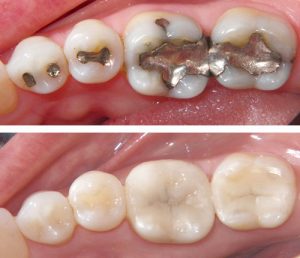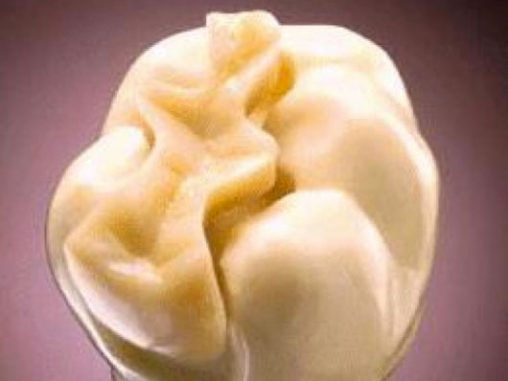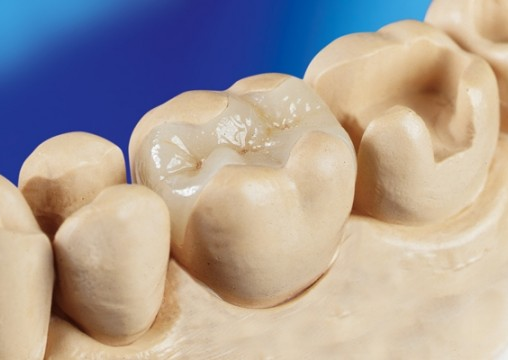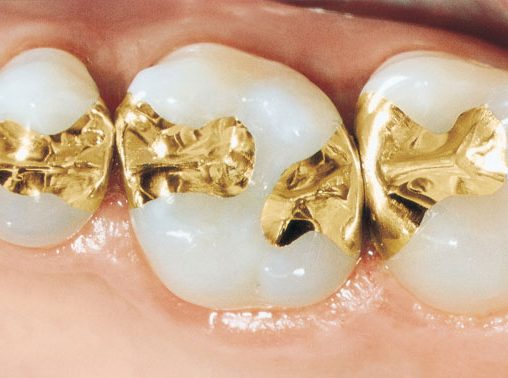Restorative dentistry
Sealants
After the eruption of bone teeth we fill the deep fissures between the cups of the teeth with white sealant, which covers the surface with a protective layer preventing possible future caries.
Tooth-coloured restoration
 We suggest you changing of old fillings if caries can be seen on the surface of the tooth or inside. Changing of amalgam fillings is recommended anyway, also without having caries, if the metal resolving examination shows that the amalgam material is not a stable alloy any more and its components: mercury, silver, tin, copper and zinc can get into the patients’ body by swallowing.
We suggest you changing of old fillings if caries can be seen on the surface of the tooth or inside. Changing of amalgam fillings is recommended anyway, also without having caries, if the metal resolving examination shows that the amalgam material is not a stable alloy any more and its components: mercury, silver, tin, copper and zinc can get into the patients’ body by swallowing.
During changing the fillings we use composite resin, which contains nano particles such as glass, porcelain or plastic. The greatest advantage of tooth-coloured restoration is the natural appearance and unlike the amalgam fillings it does not contain either mercury or any further toxic materials. The longevity of composite restoration is usually 6-8 years. We offer this type of restoration for filling small or medium sized gaps. For bigger holes the best restoration method is: inlay or onlay.
Restoration: inlay and onlay
Inlays and onlays are such restorations, which are prepared by the dental technician and they are sticked on or into the tooth precisely. They are recommended when the gap is too large in the tooth and there is not enough original tooth material to fill in the gap with traditional restoration (tooth-coloured restoration).
Making this type of restoration takes two appointments to complete. At first we remove the carious lesion of the tooth or the old filling and take an impression of the prepared cavity, besides preparing a study sample to the technician. Next we place a temporary restoration in the tooth. Restoration: inlay and onlayAt the second appointment we replace the temporary restoration with the one provided by the dental technician. The inlays’ lifespan is much longer than the composite restorations, depending on their material they can even reach the 20 years longevity.
The inlay can be made from different materials: composite, ceramics, gold and galvano-gold.
Root canal treatment
During the treatment the excess carious parts are removed, the canals are cleaned and shaped by sterile files, in the end the canals are hermetically sealed.
Since the circulation in root canal treated tooth stops, they become dry and brittle. In order to preserve the coronal structure a crown is advisable on root canal treated teeth.





